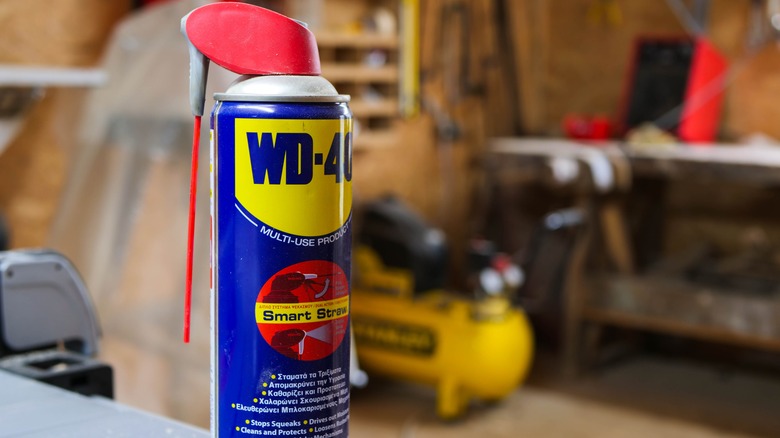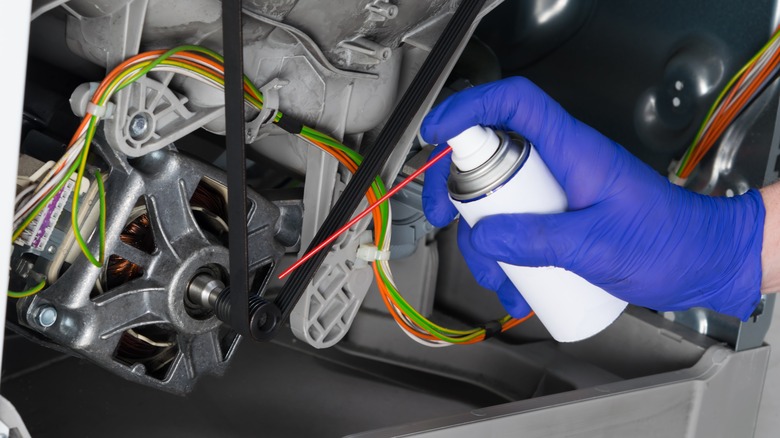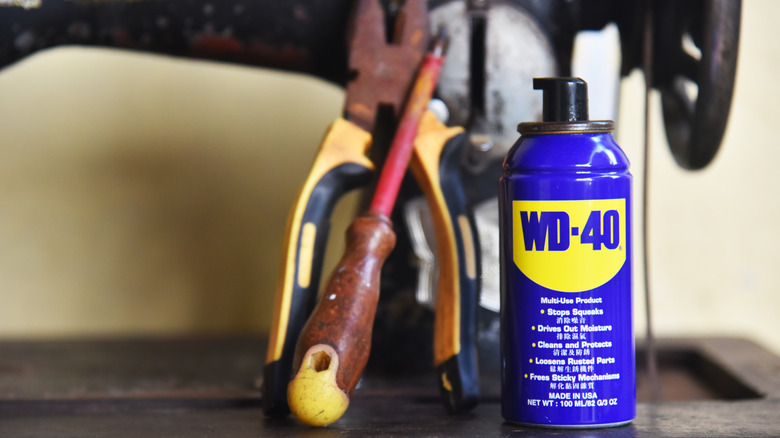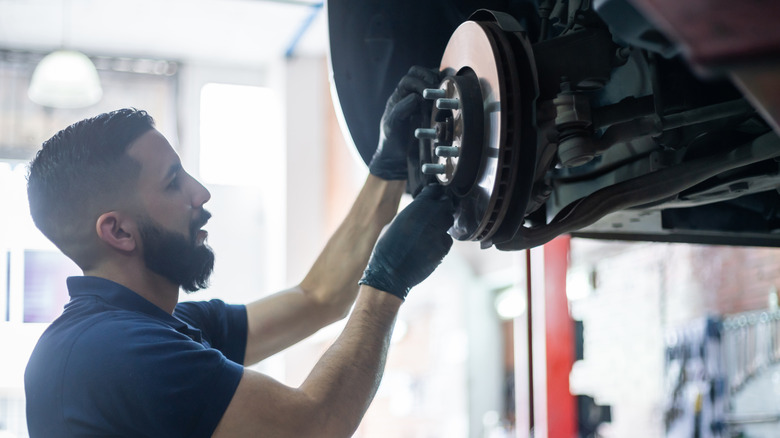Myths Busted: What WD-40 Can (And Can't) Do For Your Car
We may receive a commission on purchases made from links.
Creaky doors, screeching gears, and grinding joints on an automobile bring one product to mind: WD-40. This grease-it-and-fix-it solution, short for "Water Displacement, 40th formula," is a versatile and well-known multi-purpose lubricant and penetrating oil that is a must-have in the maintenance closet or garage. Part of its success stems from its affordability — a standard 8-ounce can of WD-40 can generally be found for around $5 to $10 in most retail outlets and online. Larger quantities or specialty formulations, such as those designed for specific applications like bike chains or electrical contacts, might be priced slightly higher. It's used for everything from preventing rust and corrosion to loosening tight bolts, but as any experienced mechanic will tell you, it's not the best solution for certain endeavors.
No matter the intended use, though, it's tough to find a more effective degreasing lubricant outside of a specialized repair shop. Before you reach for the can of WD-40 to fix the next annoying squeal your car emits, it's best to understand the basics of what it can and can't do, and why.
What is WD-40?
WD-40's origins are actually more epic than you may realize. The lubricant and degreaser was originally developed in the 1950s by chemists seeking to create a rust-prevention solvent and degreaser for use in the aerospace industry. Over time, its applications have expanded far beyond its initial purpose. Whether or not this is the result of good marketing or a breakthrough accidental use case, WD-40 gained renown for its ability to displace moisture and prevent rust, making it an effective tool for protecting metal surfaces from corrosion. Additionally, its penetrating properties allow it to loosen rusted or stuck parts, making it a popular choice for DIY projects, maintenance, and repairs.
WD-40 is also utilized to lubricate hinges, locks, and various moving components, reducing friction and ensuring smooth operation. Its widespread usage has led to its status as a household staple and a go-to product for addressing a wide range of mechanical and maintenance challenges.
What can WD-40 do for your car
WD-40's primary function as a water displacement and rust-prevention agent makes it an effective tool for protecting metal surfaces from moisture-induced corrosion. This is particularly handy for cars, as applying a thin coat of WD-40 helps create a protective barrier that wards off rust and extends the lifespan of most exterior faces. This is perhaps its most commonly-used purpose and the reason why the blue can is found in so many garages.
Additionally, its penetrating properties make it an invaluable aid in freeing rusted or stuck parts, making it a go-to solution for loosening nuts, bolts, hinges, and other components that have seized due to corrosion. It's commonly used to lubricate hinges, door locks, and sliding mechanisms, promoting longevity and enhancing the overall functionality of your car doors. Its versatility extends to removing stubborn residues and adhesives, making it an effective solvent for tasks such as removing sticker residue, grease, and even crayon marks from various surfaces.
One of the coolest uses of WD-40 is in preventing moisture-related electrical issues, saving you the hassle and risk of handling wet surfaces under the hood or dashboard. It can help dry out wet electronic components, spark plugs, and ignition systems, effectively restoring functionality in damp conditions.
What WD-40 can't do for your car
Despite its high-functioning mantra, WD-40 isn't a one-stop shop. One important consideration is avoiding its use on braking components. Applying WD-40 to brake rotors, pads, or calipers can compromise braking performance and safety, as it can lead to reduced friction between the pads and rotors. This can result in decreased stopping power and potentially hazardous driving conditions. Similarly, you should refrain from using WD-40 on your car's tires or any surface that comes into direct contact with the road, as it can reduce traction and compromise handling.
Additionally, it's advisable not to use WD-40 as a long-term lubricant on certain car parts. Most importantly, inside the engine — WD-40 is not an engine oil and its presence can deter proper function of the engine. For that same reason, you should avoid using it as a starter fluid. While it can serve as a temporary fix for freeing stuck parts, it is not designed to provide the lasting lubrication required for components like wheel bearings, suspension joints, and engine parts. Using WD-40 in these scenarios can lead to premature wear and mechanical issues over time. It's important to choose appropriate automotive-grade lubricants formulated for specific purposes when dealing with critical mechanical components of your car. In summary, exercise caution and opt for dedicated automotive products when addressing complex mechanical and safety-related aspects of your vehicle.



